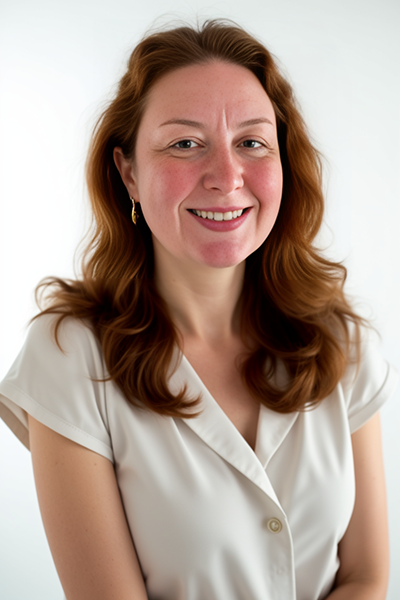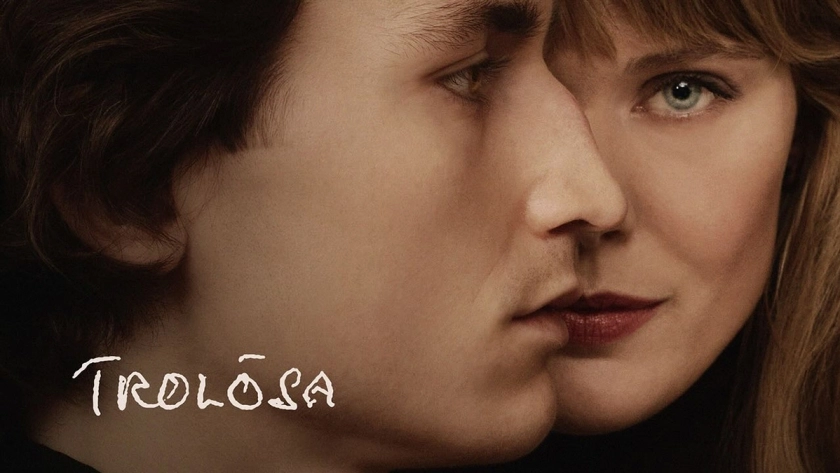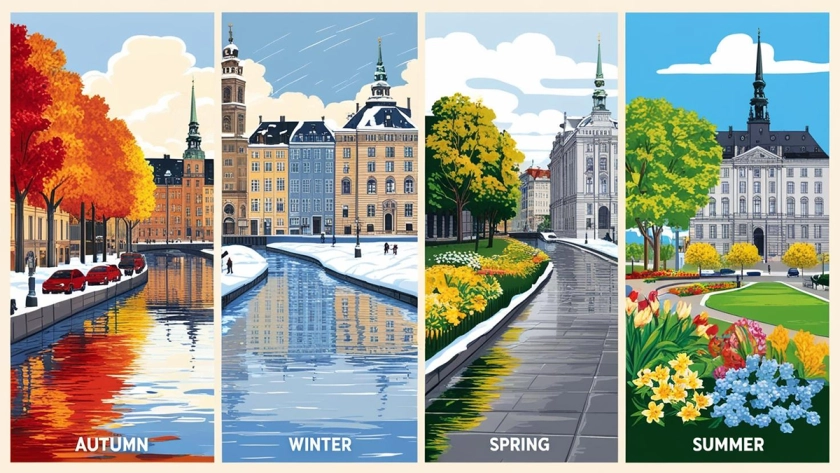
SL, the public transport company of Stockholm, currently operates an extensive metro network (3 lines split into 7 branches) that totals 110 km in length, with nearly 100 stations. Whether underground or above ground, almost all of the stations in this network (90 out of 100) are decorated: some house only artworks and can easily go unnoticed by passengers, while others, entirely conceptual, impress and spark the imagination of those who travel through them.
For the price of a single ticket, you have the opportunity to embark on a journey through space and time, surrounded by beauty, art, and history.
But how did all of this begin?
In the 1930s, the Swedish capital only had a simple tram network. Very quickly, as the city continued to grow, the increasing number of residents (which reached nearly 750,000 by 1950) necessitated the creation of a more modern and efficient transportation solution. However, in the land of Alfred Nobel and the invention of dynamite, the underground landscape was primarily made of granite, a very hard rock that severely complicated the task. Add to this the omnipresent water (lakes and seas) in Sweden and Stockholm, and the project became a long and arduous challenge.
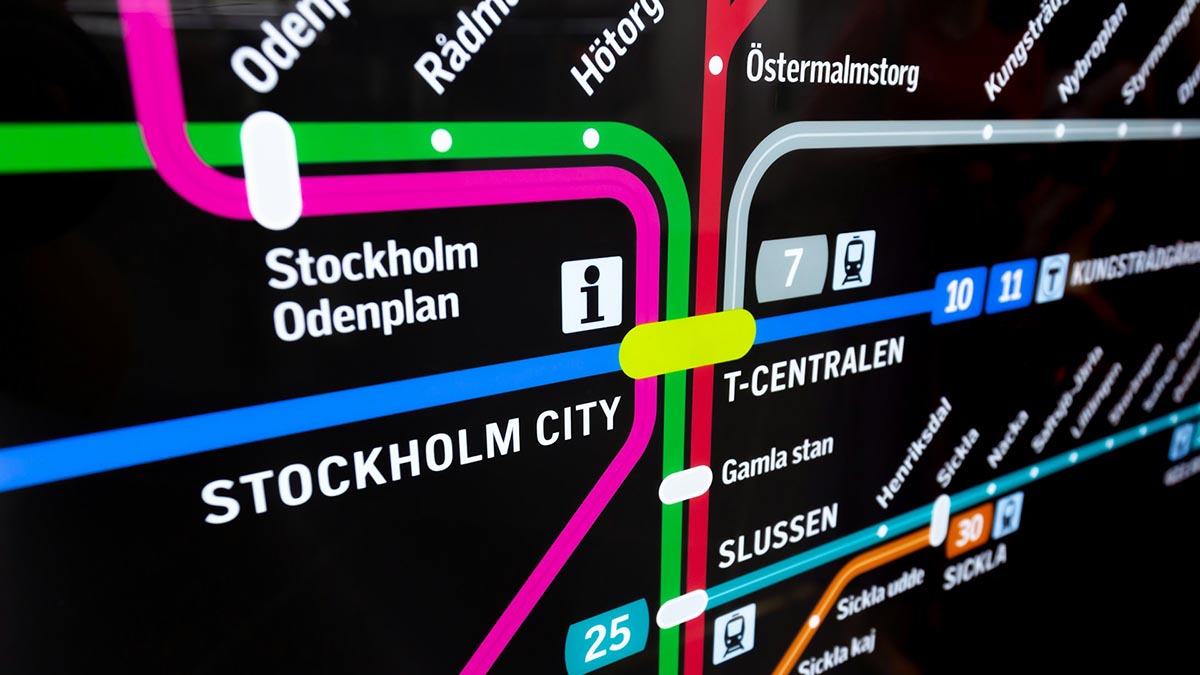
It was not until the early 1950s that the first metro stations were built, establishing a small section of the current green line (between Slussen and Hökarängen).
Beauty for All – Accessible Art!
Since the late 1890s, many theories and reflections regarding art and beautiful objects began to circulate: popular thinkers advocated the idea of beauty being more accessible, no longer reserved solely for a cultural elite. However, to become a reality, this idea needed to be supported by a new political ideology: Folkhemmet or "The People's Home," both initiated by the Swedish Social Democratic Party. Thanks to its neutrality during World War II, Sweden finally had enough funds to fully develop this idea. Alongside better social security and a welfare state, a new rule was implemented: "1% for Art," meaning that each construction project would have to invest at least 1% of its total budget into art, making it progressively accessible to everyone.
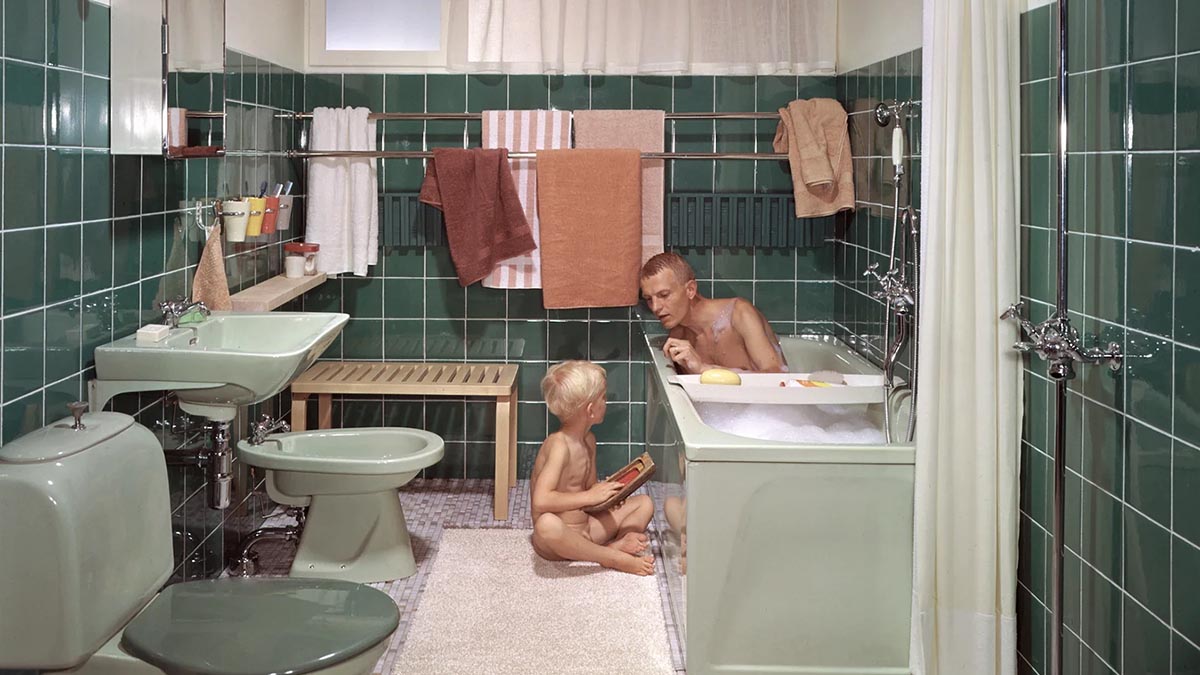 Modernt badrum på 1960-talet. Foto: Nordiska museets arkiv
Modernt badrum på 1960-talet. Foto: Nordiska museets arkiv
Over the years, more than 250 artists have been commissioned to contribute to the artworks in the metro stations. And since the "1% for Art" rule continues, and Stockholm continues to grow, two new metro lines are currently under development, so we can look forward to even more beautiful stations in the years to come. This continuous influx of new ideas and ideals, accompanying each generation of artists, is part of what makes the Stockholm metro so unique.
So come along with us on this beautiful journey!
TOP 10: Our favorite stations to discover
1. KUNGSTRÄDGÅRDEN – currently the terminus of the blue line
This one almost needs no introduction, as it is probably the most photographed and shared on various social media platforms. The playful look and vibrant colors of the station hide many clues and elements from the past, and all of them, in their own way, tell a story.

Ulrik Samuelson is the lead artist who oversaw the other artistic contributions, and his original station, inaugurated in 1977, was completed in the years 1986-87 with additional works that represent the artistic trends of the 80s but blend perfectly with the initial station. The dominant colors (red, white, and green), used throughout the station, reference the French Baroque garden that once existed above ground. Most of the sculptures, pediments, and cornices are replicas of those that once decorated the Makalös Palace, which stood in the Baroque garden and was destroyed in 1825.
It is also the only station where the granite rock is exposed, raw, and unpainted, which adds to its uniqueness. The artist wanted the station to evolve on its own, developing its own history. And one can say that it worked! Vegetation has started to cover some of the walls, creating a distinctive olfactory atmosphere, and scientists have even found a new type of fungus there. It is also the only place in Sweden where you can find a small white spider (called the cellar spider or Tegenaria domestica), which usually lives in dark mines.
2. STADION – Red Line
It is one of the very first cave-type stations: an architecture or design that generally refers to spaces or structures that imitate the appearance or atmosphere of a natural cave. This can include irregular shapes, rock textures, and elements that create an underground, damp, or mysterious atmosphere. In the context of the metro stations in Stockholm, this is reflected in irregular walls and ceilings, often sculpted to resemble natural rock formations, as well as light effects that enhance the "cave" feel. This design, which had not yet been developed for the first metro stations inaugurated in the 1950s and 60s, became the standard after 1972.

Here, Enno Hallek and Åke Pallrap tried to capture the sky and its wonders: a magnificent underground rainbow awaits you, opening the door to various interpretations, but isn't that the very essence of art? There are also many sports references due to the proximity of the stadium located just above the surface.
The original poster for the 1912 Olympic Games is visible near the escalators of one of the two exits: the only time the city of Stockholm hosted the Games is thus underground, almost sanctified.
Other details and references to sports are scattered throughout the station, but the presence of the music conservatory above ground has also given rise to some artistic details in the station. It's a colorful, very photogenic station.
3. T-CENTRALEN – at the intersection of the 3 metro lines
Undoubtedly, this is the busiest and most bustling station in the city, with 4 levels of underground tunnels: here, the 3 metro lines intersect, and since 2017, suburban trains arrive and depart from a 4th level, located 40 meters underground. The two upper levels (green line and red line), however, were the first to open in the 1950s and resulted from a compromise between a desire to showcase art and the need to preserve space for advertising, which was booming at the time. In this station, one level is reserved for advertising, and another is entirely dedicated to artistic works.

Works of art from 16 different artists have been selected to be displayed on the platforms and walls, pieces representing the artistic trends of the 50s-60s that highlight materials such as ceramics, glass prisms, and carved stone.
Less spectacular than the cave-type stations, T-Centralen is still the very first station created in 1957 with a permanent art installation.
In 1975, when the third metro line (the blue line) was added and built below the other two, Per Olof Ultvedt (the sole responsible for the new section) chose a soothing blue color for this most trafficked interchange station in the city and wanted to pay tribute to all the workers who played a role in the construction of the metro network.

Thus, at the end of the corridor leading to the blue line, you will be able to see the silhouettes of the tradespeople involved in the construction of this new metro line, painted on the walls and ceiling: with their tools and in specific positions related to their respective professions.
4. FRIDHEMSPLAN – Green and Blue Lines
On the platforms of the blue line station, created in 1975, artist Ingegerd Möller drew inspiration from the sea, the archipelago, and the human impact on the maritime environment to create an original and striking work: gray walls with reflections of green and brown to give the station the appearance of raw rock, the presence of a full-size fishing boat at one end of the platform and a compass, an anchor—reminding visitors of the central theme—while other showcases scattered throughout the station tell the story of the gradual damage humans have caused to the environment, particularly the sea.
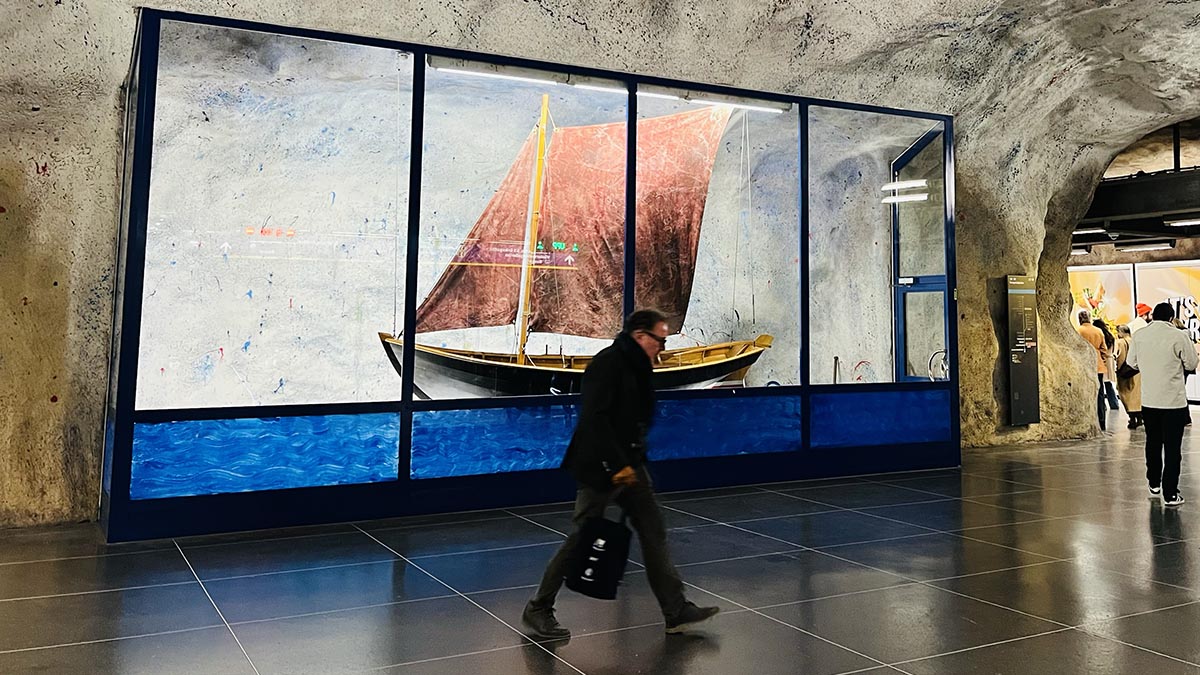
Les quais de la ligne verte accueillent eux l'œuvre d'un artiste différent chaque année. Cette année et jusqu'en octobre 2025, vous pourrez ainsi admirer « Racines » de Britta Marakatt-Labba, une artiste suédoise sâme célèbres pour ses représentations narratives multi-supports (textile,aquarelle, lithographie etc..) utilisant des motifs de la culture et de la mythologie sâmes.
The platforms of the green line, on the other hand, host the work of a different artist every year. This year, until October 2025, you can admire "Racines" by Britta Marakatt-Labba, a Swedish Sámi artist famous for her narrative multi-media representations (textile, watercolor, lithography, etc.) using motifs from Sámi culture and mythology.
Still on the green line but at the entrance located on Fleminggatan, there is also an original and very engaging work by Portuguese artist Dimas Macedo: a 25-meter-long wall decorated with azulejos, a traditional Portuguese ceramic that honors the Swedes' fervent love for nature. A terracotta statue by the same artist also pays tribute to Carl von Linné, the famous Swedish botanist. Stockholm was selected in 1997, along with 19 other cities worldwide, to display this azulejos work, a way for Portugal to promote its traditional ceramics worldwide.
5. ÖSTERMALMSTORG – Red Line
This is a typical station from the second period of metro development, the 1960s. Rather than selecting multiple works to compose the station's decoration, a blank slate was given to a single artist who had the opportunity to express herself across all the platforms. In this station, you can discover the artistic vision of a great Swedish artist, Siri Derkert, who was 77 years old at the time of its construction.
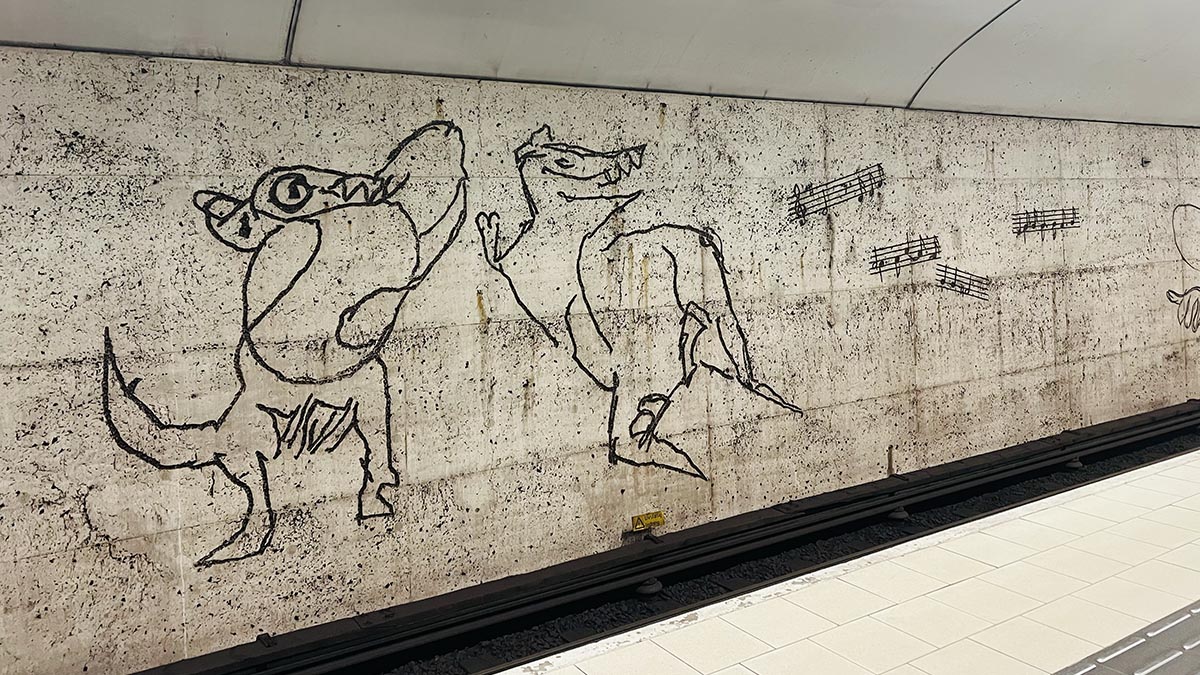
Using the technique of "engraved concrete," previously used by Picasso, she developed her favorite themes (music, peace, nature, and feminism) and drew on the concrete walls with a high-pressure lance. This work, and the universe it embodies, is something passengers don’t always notice, but if you take the time to look, it reveals the intellectual concerns of Swedish artists in the 1960s.
6. UNIVERSITETET – Red Line
The current station bears no resemblance to the original university station, created in 1975 by Swedish artist Pär Andersson, where cave-like walls were decorated with nature-inspired motifs. In the late 90s, following the expansion of the university campus and water damage to the previous decorations, it was decided to rebuild the station. The project was entrusted to Belgian artist-architect Françoise Schein, who had previously worked for metro systems in São Paulo, Paris, Brussels, Berlin, and Lisbon, and wanted to integrate Stockholm into her global project on human rights.
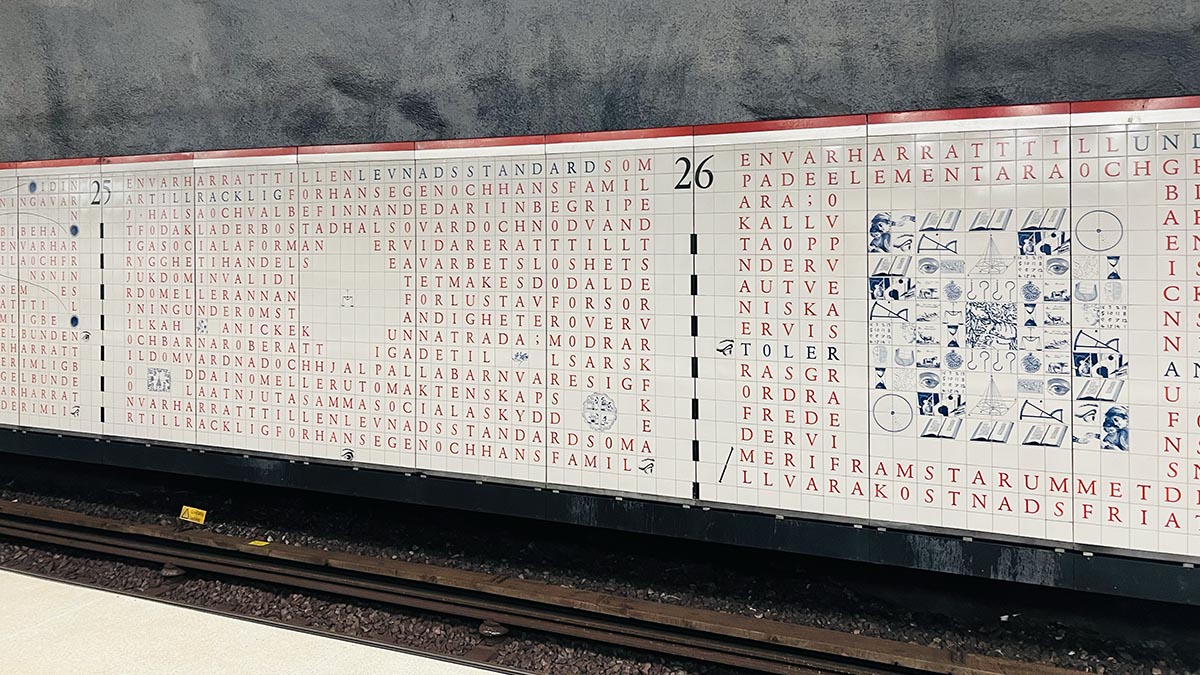
Small white ceramic tiles, each bearing a letter from the Declaration of the Rights of Man and of the Citizen, along with the 30 articles of the declaration, cover the walls of the station. The text is written in Swedish, without punctuation or spaces between the words, making it difficult to read.
This was an intentional choice by Françoise Schein, who wanted to highlight the effort needed to understand and respect these rights. On the passenger platforms, other inscriptions have been applied to slightly larger Azulejos ceramic tiles, narrating the travels of Carl von Linné and his work on the encyclopedia of nature.
7. SOLNA CENTRUM – Blue Line
Another colorful cave-type station, but this one also adds a healthy dose of humor: Karl-Olov Björkman and Anders Åberg evoke Swedish society in 1975 and all the changes it had to face. The two main colors of the walls, red and green (like an eternal sunset over the verdant Swedish nature), are dotted with little vignettes representing daily life in Solna, painted on the walls or displayed in showcases, depicting the rural past of Solna and the modernization of the neighborhood as it gradually became integrated into the urban space.
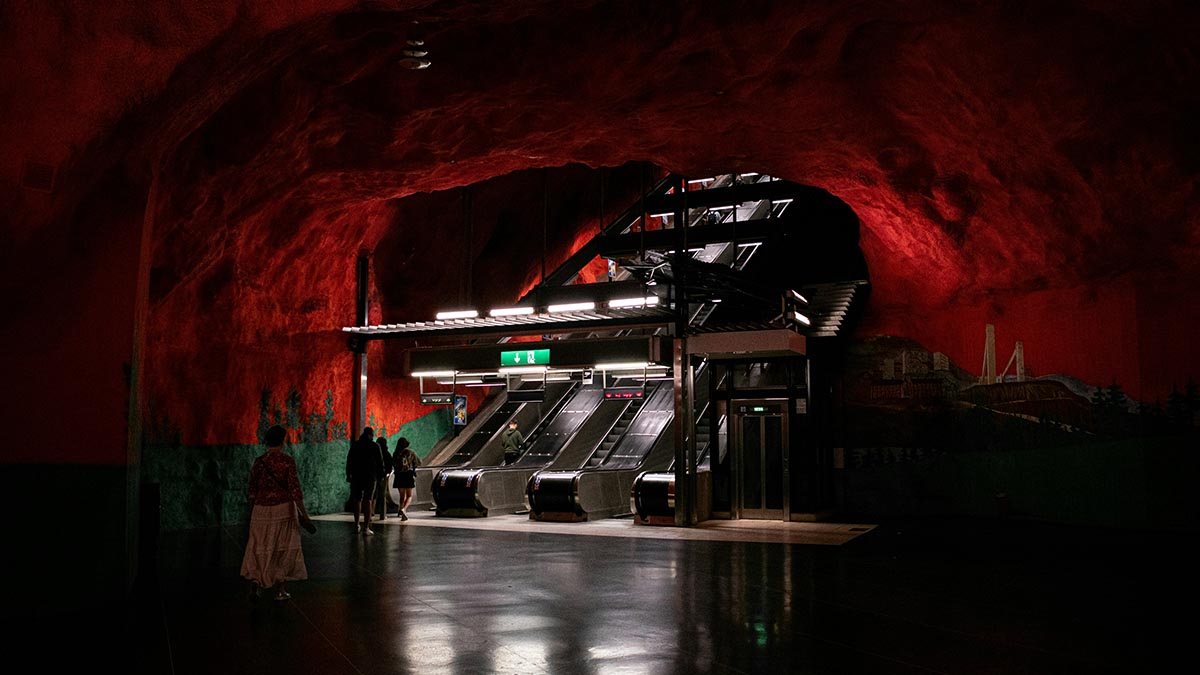
Among other things, you’ll find a life-size elk watching an unaware hunter, a woman picking berries surrounded by trash, and small Swedish houses built near the White House, symbolizing a form of oppressive city power over nature.
8. THORILDPLAN – Green Line
Inaugurated in 1952, before art permeated the world of the metro, this elevated station has retained only one original artwork: a huge sun at the end of the passenger platform. In the 2000s, it underwent a recreation directed by Lars Arrhenius, a Swedish artist and designer known for his distinctive visual styles, often characterized by geometric patterns, simplified visual elements, and original representations of reality.
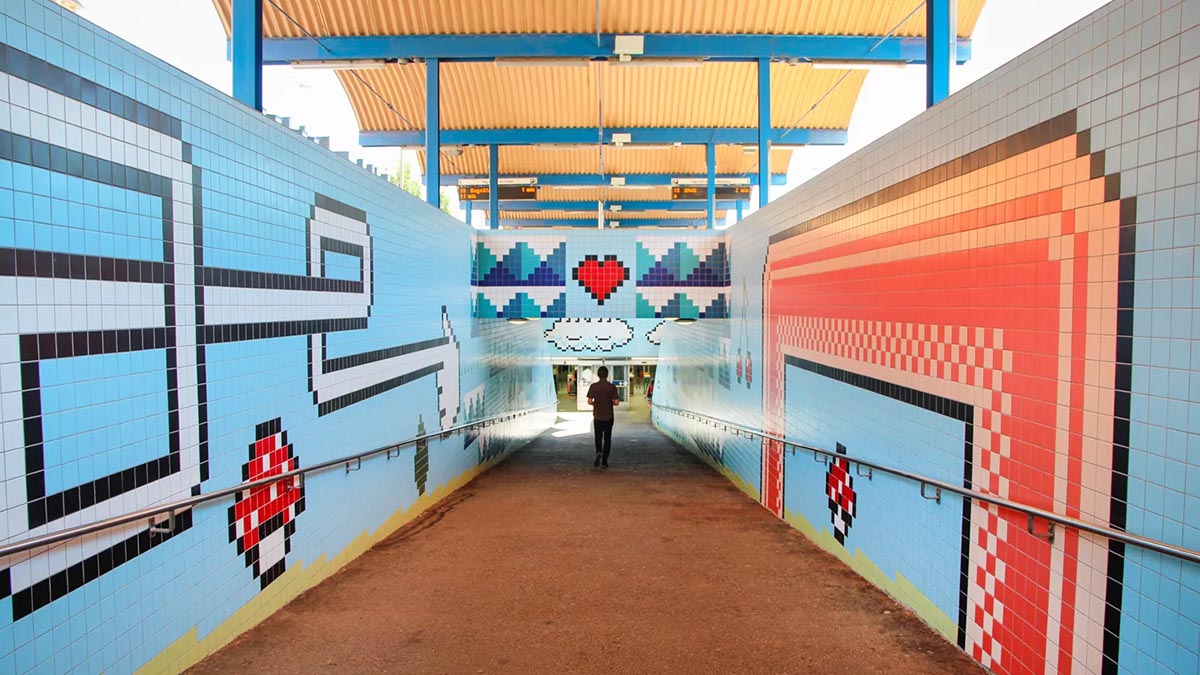
His work, "Playtime", playfully and nostalgically explores the video game culture of the 70s and 80s. On the bluish Italian ceramic walls, various symbols from famous games like Super Mario Bros, Pac-Man, and Space Invaders are depicted, showcasing the emergence of pixels in our images.
8. HÖTORGET – Green Line
Typical of the late 50s, this station was part of the first section of the green line to be infused with art: here, the granite is carefully hidden as it was then considered prehistoric and the opposite of the modern effect sought to resemble the new metro systems that were being built worldwide at that time.

New York clearly served as inspiration for this station. Light blue tiles and neon light installations (103 glowing tubes in different shades) welcome passengers for a guaranteed retro experience. The station is currently undergoing renovation, but everything is being done to preserve the typical nuances of this particular era.
9. TEKNISKA HÖGSKOLAN – Red Line
Inaugurated in 1973, this cave-style station was entrusted to Lennart Mörk, the chief scenographer of the Royal Dramatic Theatre and the Royal Opera at the time. The decoration is very dramatic, with a rather dark backdrop inspired by the four elements: Earth, Water, Air, and Fire.
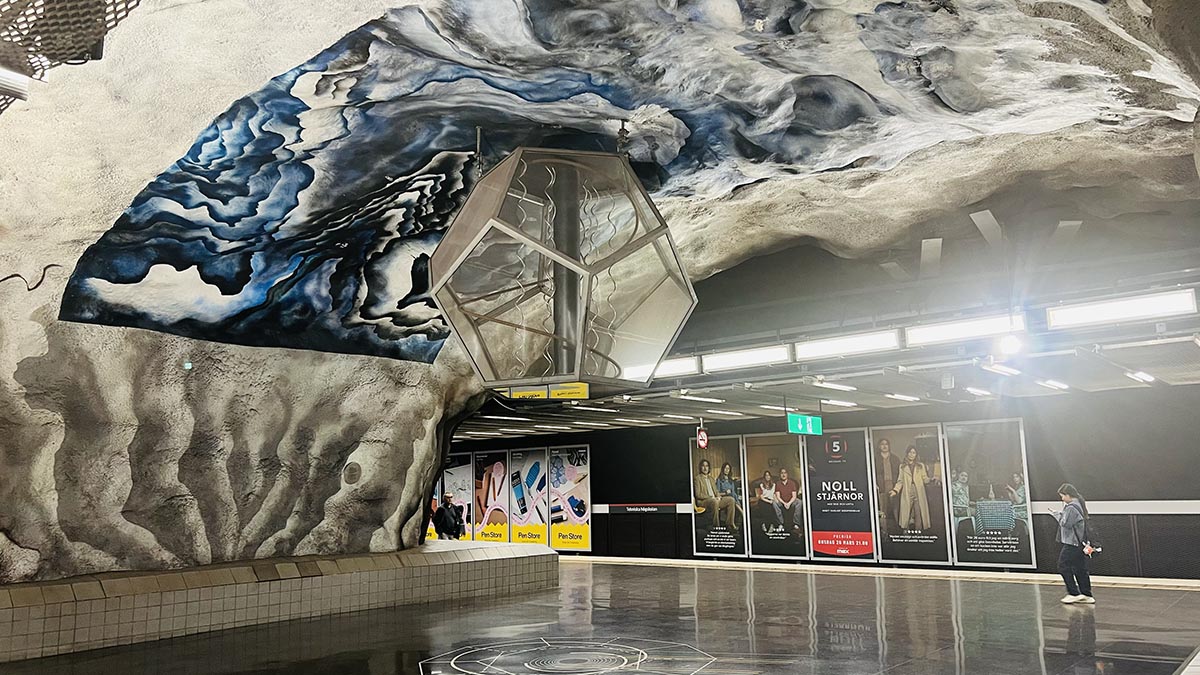
Once again, the proximity of the Royal Institute of Technology (KTH), located just above the surface, inspired the sculptures and installations, all symbolizing scientific discoveries, physics, and the laws of nature by Isaac Newton, Leonardo da Vinci, Copernicus, Einstein, Kepler, and Plato.
BONUS: STOCKHOLM CITY AND ODENPLAN – Suburban Train Interchange Terminals
In 2017, the decoration movement spread to the suburban train terminals, with departures moved from the central station to a dedicated space just below the current metro lines. Two new interchange stations were thus created: Stockholm City, located under the metro lines at T-Centralen, and Odenplan, in place of the old eponymous metro station.
The construction of these two large interchange terminals led to a call for proposals, which was answered by many contemporary artists offering projects in innovative artistic forms: photo montages under blown glass with optical effects, video creations, light installations, etc., offering a diverse panorama of contemporary artistic creation.
These two stations, decorated with multi-medium contemporary art, allowed many artists to create works centered around predefined themes, such as trees, the city, and so on, and assigned to specific platforms.
The works resulting from these collaborations are visible to all passengers using this network, as well as to curious tourists eager to discover them.
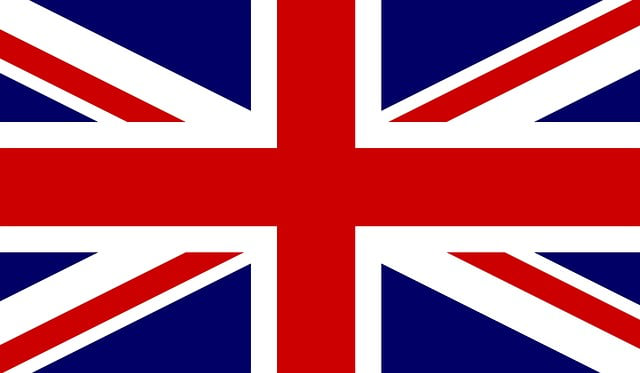 en
en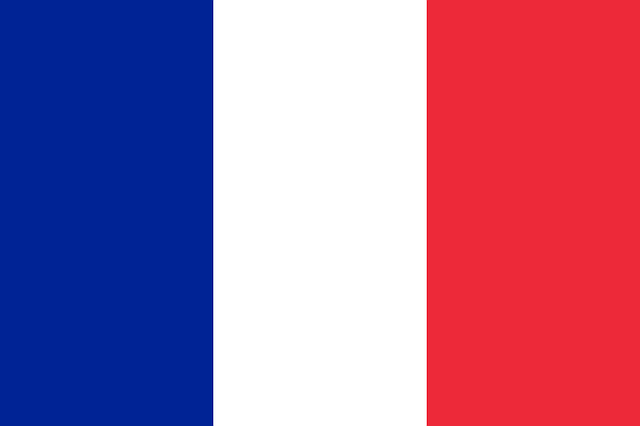 FR
FR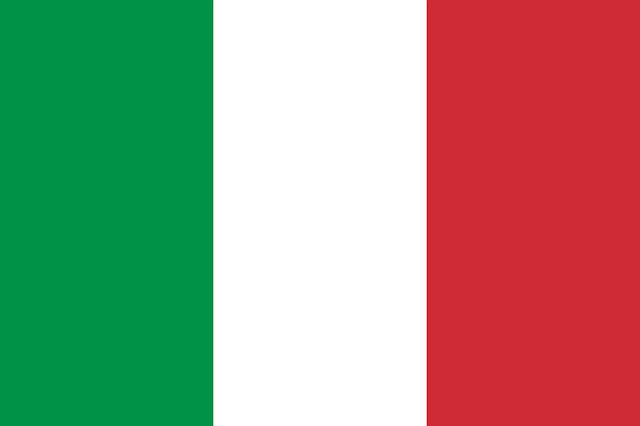 IT
IT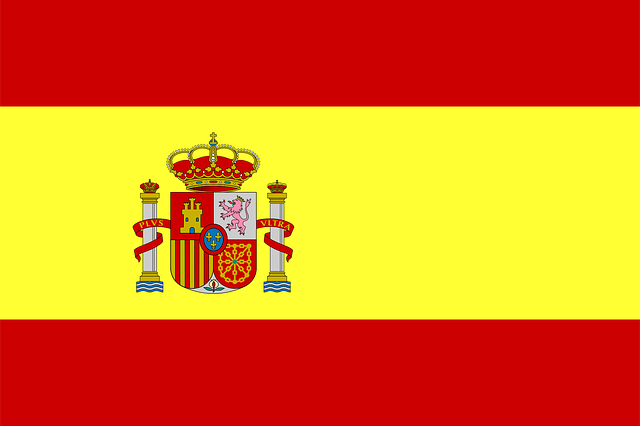 ES
ES

